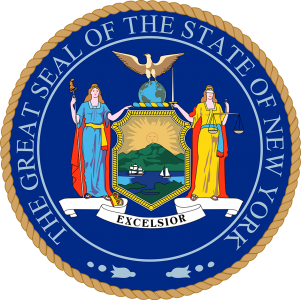Committed To Becoming More Age-Friendly
New York State United States of America
New York State has endorsed a comprehensive policy, program and funding approach to promote age-friendly ideals. New York has already started implementing specific age-friendly practices including 1) funding for NYS Downtown Revitalization Initiative which awards $100 million to 10 municipalities based on age-friendly criteria and language “creating or embracing – Age-Friendly Community Certification from AARP/WHO” and 2) a first in the nation statewide App to help connect older adults to services. More broadly, in 2017, , the Governor advanced a “Health Across all Policies” (HAAP) initiative, where each state agency is directed to take into account how agency actions – such as programs and policies, procurement language and/or regulation – can positively impact health and healthy aging, and to make NY the first age-friendly State.
HAAP builds upon and utilizes the goals of NY’s Prevention Agenda, the blueprint to improve the health of all New Yorkers. The next iteration for the Prevention Agenda for 2019-2024 will incorporate the eight age friendly domains to establish one comprehensive framework. Under the umbrella of HAAP, NY is identifying ways in which decisions in multiple sectors can improve health and wellness while simultaneously advancing other goals, such as promoting job creation and economic stability, transportation mobility, and environmental sustainability, leveraging investments that can have complementary benefits in more than one area. Achieving these combined goals requires attention to factors outside of health care and across multiple state agencies – such as access to outdoor spaces and healthy foods; and improvements in education, housing and jobs. An example of this interagency approach that holds the potential for benefiting an entire community would be an examination of opportunities in affordable and supportive housing developments to include space for health and wellness programs, rooftop gardens, or outdoor recreation areas.
Agency funding currently dedicated to programs and services that are targeted to older people are not contained within one agency, hence the purpose of bringing 14 state agencies together in this effort. Across these agencies projects targeted toward older people have an impact on overall community health. Some examples include: the Livable New York procurement project and the promotion of Local Laws to Age in Place at the Department of State, the Healthy Homes Initiative, and the Nursing Home Clean Energy Initiative at the New York State Energy Research and Development Authority, as well as the Home and Community Based Services to Support Aging in Place at the New York State Office for the Aging. Additionally programs, procurement projects, and initiatives meeting one or more domains of age friendly have been identified for promotion and advancement as part of HAAP throughout State agencies, including: Department of Health (DOH), Department of State (DOS), Office for the Aging (NYSOFA), Department of Environmental Conservation (DEC); Division of Homes and Community Renewal (HCR); Parks; New York State Energy, Research and Development Authority (NYSERDA); Department of Transportation (DOT); Agriculture and Markets (DAM); Empire State Development (ESD), Office of General Services (OGS), Office of Mental Health (OMH), and the Office of Children and Family Services (OCFS).
To better achieve the HAAP goals, agencies will be instructed to consider, where appropriate, the domains of livability and the Prevention Agenda in their day to day work by including those domain areas within State plans to the federal government, county plans to the State, and procurement opportunities to incentivize understanding and behavior change in short and long term planning.


